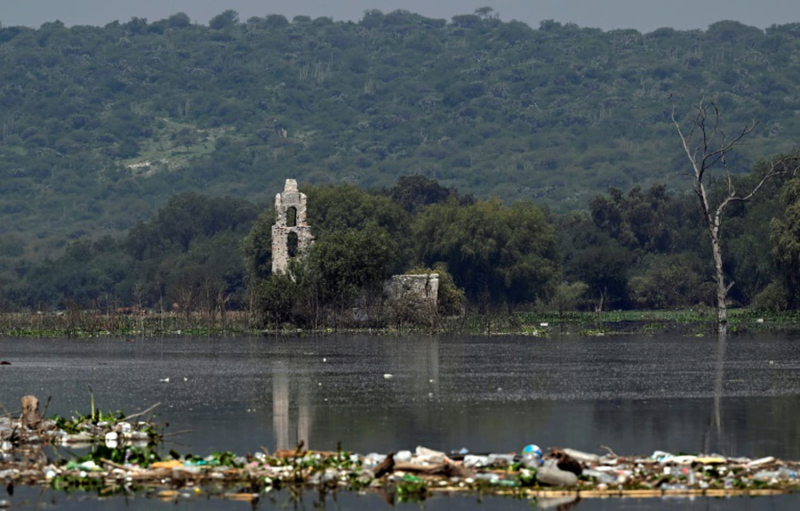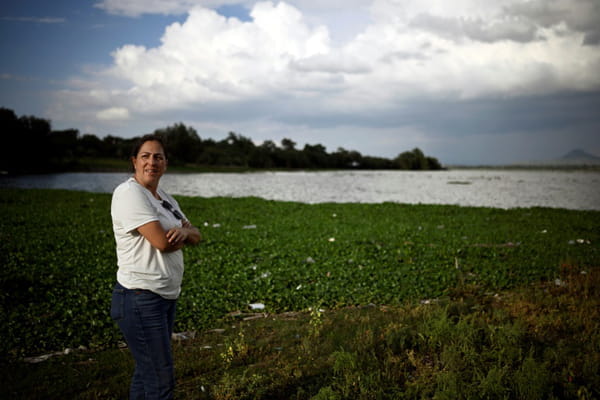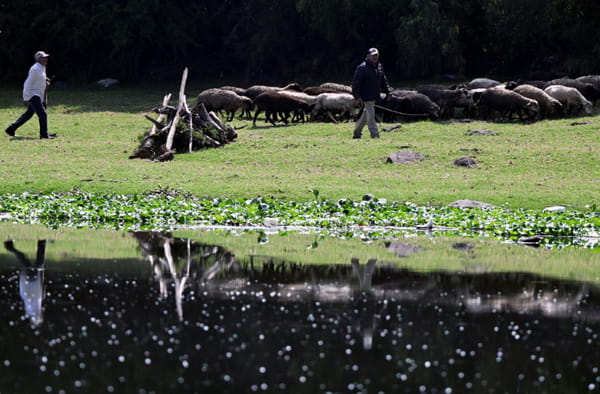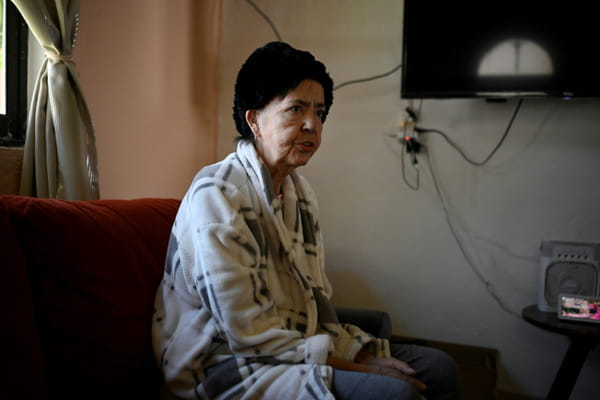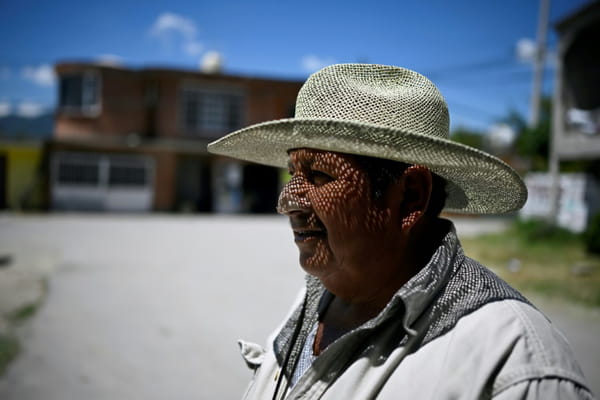On the bank of a polluted reservoir, presumed responsible for a With the rise in cancer cases in the region, Yury Uribe hopes to see the light at the end of the tunnel after years of battling a “Environmental Hell” in Central Mexico. The 43-year-old woman lives next to the Endhó dam in the state of Hidalgo, north of Mexico City, which receives wastewater from the capital and its suburbs (22 million inhabitants), as well as industrial waste. In the viscous waters, mosquitoes, garbage and a human corpse appear, the third in a month, AFP journalists noted. The industries discharge heavy metals such as arsenic and mercury into the Tula River or other tributaries that end up in the reservoir. For 20 years, Yury and the residents of the community of Tepetitlán (10,830 inhabitants in 2020) have been fighting to stop pollution of the wells. Activist Yury Uribe near the Endho Dam in Tepetitlán, Mexico, August 5, 2024 © AFP – ALFREDO ESTRELLA Yury Uribe is a member of the Social Movement of the Earth, an NGO launched in 2004 to make visible the tragedy which strikes this area of nearly 25,000 hectares, an “environmental hell” according to the government in 2019 . These are areas “sacrificed so that Mexico City can function well,” explains the activist. – “Encouraging” – The fight was not easy. The residents besieged the Ministry of the Environment and the National Water Commission (Conagua). They were helped in their fight by a long-term investigation by N+, a news channel of the Televisa group. “Deaths recorded by cancer between 2010 and 2020 in the Tula region increased by 189%, compared to 30% in all of Mexico,” we read in this investigation awarded the 2024 Breach-Valdez journalism prize (of which AFP is a member of the jury). Two men herd their sheep near the polluted banks of the Endhó dam in Tepetitlán, Mexico, on August 5, 2024 © AFP – ALFREDO ESTRELLA A first victory was recorded in mid-June when the authorities announced their intention to declare the Endhó dam area an “ecological restoration zone.” “An act of social justice,” the Environment Secretariat (Ministry) commented when announcing the decision. It is “encouraging (…) to stop complaining and find solutions,” emphasizes Yury Uribe. The Endhó dam, with a capacity of 182 million m3, is surrounded by trees that are reflected in the water. A picturesque image even if life has deserted the waters, according to the inhabitants. The fetid smell is not the most important problem. For the residents of Tepetitlán, there is no doubt that the pollution of the reservoir is the cause of cancers and gastrointestinal diseases. “It's due to what we eat, what we breathe, the environment,” says Irma González, 47, who suffers from breast cancer. Former teacher Blanca Estela Santos, who has cancer, in Tepetitlan, Hidalgo state, Mexico, on August 5, 2024 © AFP – ALFREDO ESTRELLA “There are many of us who have cancer,” says her neighbor Blanca Santos, 64, who has lung disease. – Sacrifice – Authorities have promised to investigate the cause-and-effect link between pollution and cancer cases. Oncologist Eduardo Amieva explains that heavy metals “start by accumulating in organs” such as the kidneys, liver, skin or bladder if their concentration is excessive. “They cause alterations in chromosomes and ultimately cancer,” he explained to AFP. The water held back by the dam has been used for years by farmers to water their crops in the Mezquital Valley. Basic products in Mexico such as corn, chile peppers and red beans are sold in Mexico City and other states in the country. Farmer Víctor Ángeles in Tepetitlan, Mexico, on August 5, 2024 © AFP – ALFREDO ESTRELLA “This water has brought us benefits” but also “harms,” recognizes Víctor Ángeles, a corn farmer. “The problem is the discharges that the factories send us,” adds Mr. Angeles, some of whose family members have cancer. The restoration plan, which is to be formalized in September, seeks to reduce discharges into the reservoir and improve water treatment. All reproduction and representation rights reserved. © (2024) Agence France-Presse